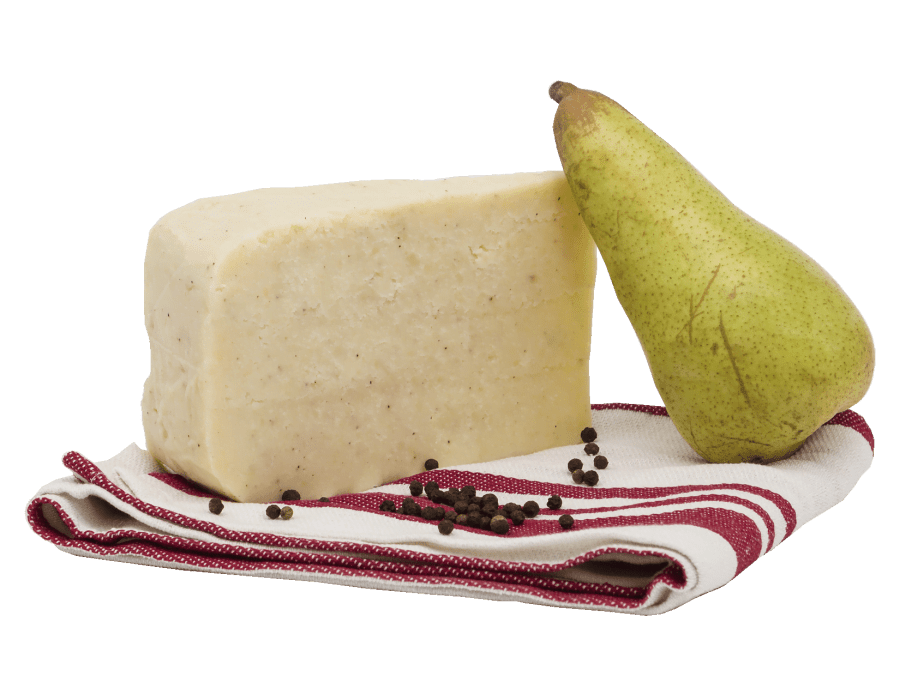Formadi Frant
The young cheese from Carnia was created with the purpose of rescuing “defective” cheeses that had swollen or had a cracked rind. It is of protected origin, which is taken care of by the non-profit organization Slow Food FVG (see Facebook).
Unpasteurized milk exclusively from cows from the local pastures of Karnije is used for production. It can be eaten 15 days after ripening at the earliest, and it is best 40 days after ripening. Often in production itself, these are the remains of strange and incorrect forms of failed cheeses. Those remains are crumbled, chopped and mixed with added milk, cream and pepper, to be packed in wooden molds and left to ripen. The texture is white or pale yellow, depending on the season of production, with specks of pepper around. Intense and long taste, slightly spicy with a continuous pleasant balance of sweetness and saltiness. Formadi Frant is one of the oldest cheeses, originally used to restore or preserve other cheeses that were not good enough to sell. Similar preparations can be found in Piedmont.
Now, it is important for us in Croatia to know where Carnia is. It belongs to the province of Udine, which is part of the Friuli region. So it’s the upper northern part that borders Austria. The capital is Tolmezzo (see map). Karnija consists of seven valleys where, among other things, cows are bred specifically for the production of cheese and milk. It is an area of high-quality pastures due to the Alpine area and cold air, thus also good quality milk and meat. Karnia is very interesting to explore, but I will describe that in a separate post. For now, I would stick to cheese.
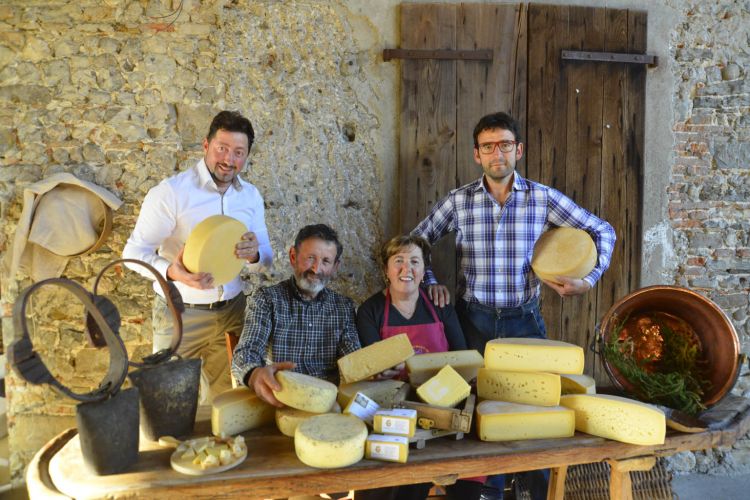
Fattoria Gortani
(see Facebook) One of the most famous producers of Formadi Frant (see Google map) is Fattoria Gortani. It is considered the champion in the world when it comes to this cheese. It was located in two locations. The winter production location is in the village of Mereto di Capitolo next to Palmanova. During May until September, the whole family and production together with the cows move to the “summer residence” – Agriturismo Malga Pozof. It is a beautiful plateau above Tolmezzo on 1583 m above sea level, in the center of Karnia (see Google map).
It is important to allow livestock to feed on herbs that only high mountain pasture offers during the season. There are a lot of medicinal herbs that the cows digest and thus strengthen their immunity because, among other things, they have also grazed on natural antibiotics. There, they prepare simple dishes for their guests – among other things, homemade bread, polenta, mountain potato frito and cheese.
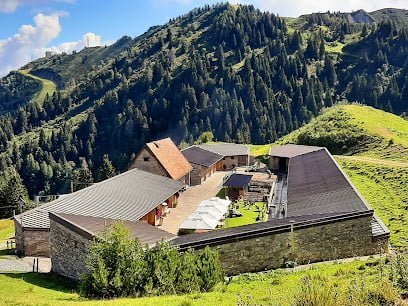
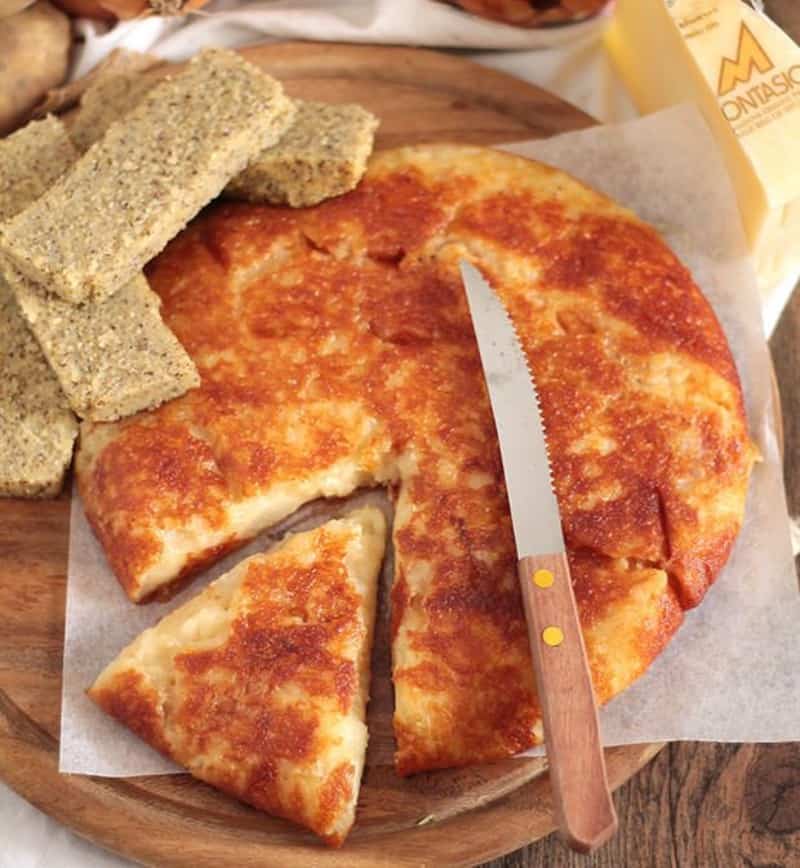
Malga Pozof is an example of the restoration of old mountain dairies, as proof of how life used to be on mountain pastures. In winter, however, in the village of Mereto di Capitolo, they control the cattle’s diet, so that the cows are not treated with drugs. The result is superior milk, which is used for further processing, where the family is trained in superior dairy techniques. In addition to Formadi Frant, which they specialize in, they also produce other cheeses.
For example, a simple dish that I tried, which they prepare themselves, is famous for a traditional mountain recipe called “Frico Magnifrico Fattoria Gortani con Panceta”. It is about a former poor dish where onions are briefly fried, mixed with this cheese and grated potatoes previously mixed in flour and baked on a pan in hot oil. They also added pancetta.
It is served as a “first course” (primi piatti). Frigere means to fry in Latin, which is how the derivative “frico” was created, which is used in Italian cuisine. Just saying “frico” would mean something like a cheese pancake or a cheese pie, although both names trivialize the story. A traditional dish from this part of Italy can mean a lot. That’s why additional names are added to “frico”, in order to specify the dish. There is soft and hard “frico”, and Montasio cheese is a typical preparation cheese. The first recipe was created sometime in 1540 by an Aquileian patriarch. It is often served with polenta and red wine. It is interesting that frico received attention in the world only in 2013 in the TV series Masterchef USA, when a man from Friuli – Luca Manfe, prepared it in the semi-finals of the season. That’s how I found out about this dish.
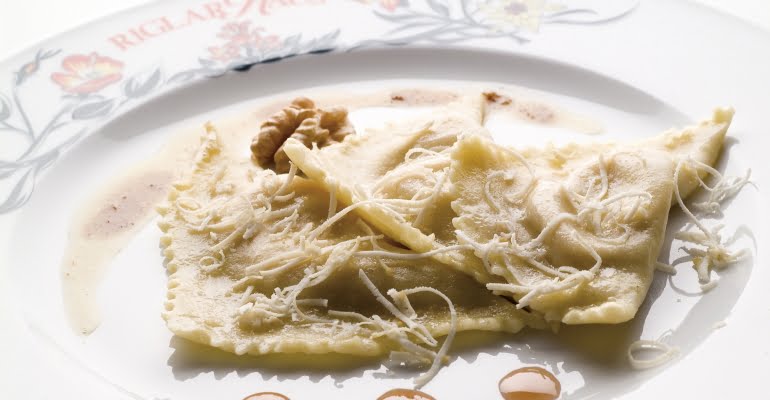
Triangoloni al “Formadi frant” e noci, the second is a simple dish that I tried, but not at their place, but at a restaurant in the area and later prepared it at my home. It is a dish with homemade pasta, triangles. Mix Formadi Frant with fresh ricotta, add ground walnuts and a little milk so that it is not too dry. Add more salt and pepper and make a mixture out of it. Place a spoonful of the mixture on each triangle of pasta and fold the triangle over. Cook for a short time in salted water and very importantly, transfer to a pan, brown the butter and add the remaining walnuts. Finally, we add some grated fresh Formadi Franto over the whole meal while it is on the plate. Do not eat hot, but let it be lukewarm so you can feel all the flavors.
Casera Rugo by Beppe Rugo
The founder, Giacomo Rugo, is another well-known producer of this cheese who is located in Enemonzo (Via Nazionale 6), his own farm not far from Tolmezzo. More precisely at the exit from Enemonz (see Google mapmap). The business was inherited by Beppe Rugo and he runs the family business, dairy and cattle breeding, and he also opened the Casera Rugo store (see Facebook) within the farm. In addition to their products, it is possible to find the products of about 60 local farmers who fall under one cluster. It is also possible to try local specialties. The family is fully dedicated to this business and the production of Formadi Franta, but also Formaggio Salato, again a special salty cheese that matures in brine. I’ll talk about that another time because every story about Italian original food is so complex that it’s a sin to just mention it and move on.
The passion of those people, who are not burdened by advertising and social networks, but by production and loyal customers, is interesting. They are aware of their originality, which is recognized, and then there is no need for a lot of advertising, but stick to authenticity. The products are top quality, and yet it’s not about being expensive. Anyone can afford a portion of sliced cheese, and in addition to fine food, it will remain an incredible experience. Beppe Ruga is said to be a very energetic young entrepreneur who cares about tradition and the area he comes from. He is uncompromising in production and is not subject to combinations, and his earnings come second. The whole family is immersed in the story and they treat their cattle as if they were in a wellness center, not in a barn. Antibiotics are also something that is not used in their animal feed.
Azienda Agricola San Juri
The third famous cheese producer (see Google maprtu). In the heart of Carnia, a few kilometers from Tolmezzo, between the towns of Enemonzo and Raveo, there is the small village of Colza. Lucia Valle and her husband run the farm San Juri (Via Scaluggio 4, Mezzoldo). The company owes its name to the ancient church located nearby. The company’s territory covers an area of 15 hectares, and in recent years its predominantly zootechnical focus has been supported by the production of “Formadi Frant”. They grow fruits and vegetables. Fresh vegetables are preserved in oil or vinegar, such as radicchio and turnips. They also breed about 60 cows. In winter, the herd rests on the farm, while during the summer they move to mountain pastures at an altitude above 1,500 meters.
Only those three are registered producers of Formadi Franta in Friuli-Venezia Giulia, and they distribute their products all over Italy. It is more difficult to get it with online delivery because there are actually few manufacturers and the demand is high. Everything the Italians produce is of protected origin. It is easy to follow how something was created, where it came from, how it developed and where it is now. It is very important to approach every food and dish in this way. If we talk about patriotism, this is one of the ways to love your region and the country you live in. On the other hand, it is an indicator of a serious state that protects small entrepreneurs and creates recognition in the world. Can anything be learned from this?
ORDER ONLINE FORMADI FRANT
Text: Srećko Karić
